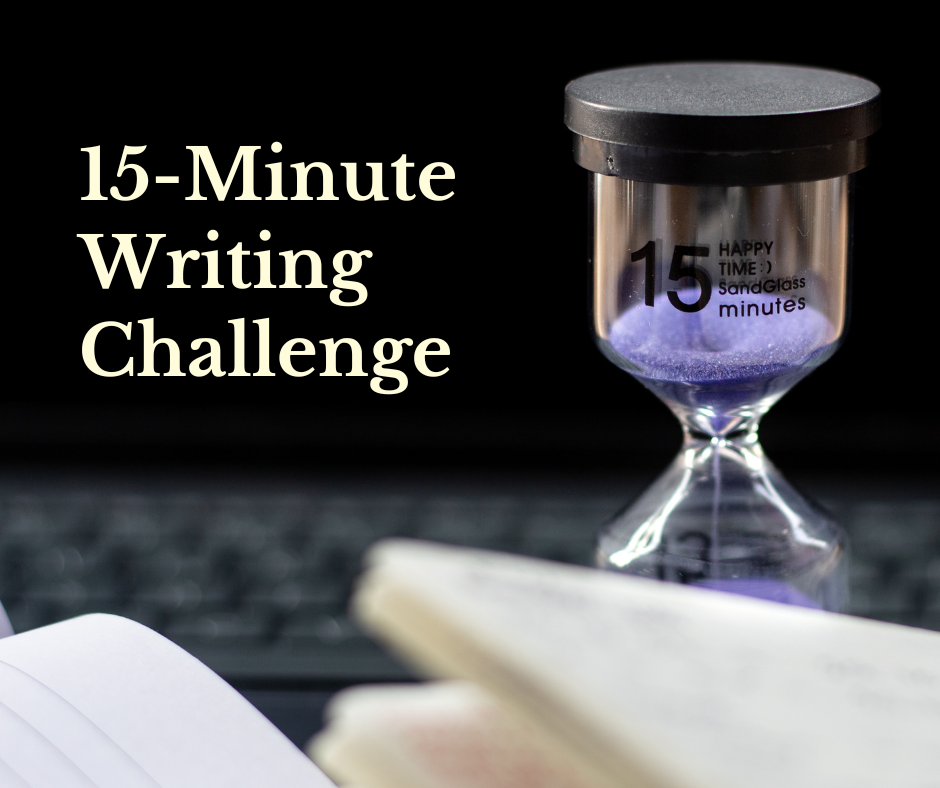Finding and protecting time for writing, especially during the parts of the year when you are teaching, is difficult. It may be helpful to consider the different kinds of time available.
Writing, as far as I’m concerned, encompasses anything that moves your projects forward.
I advocate establishing a writing practice, while making writing a priority when you plan the rest of your schedule.
- What kinds of writing can you do in different kinds of time?
- How can you make more effective use of all 3 types of writing time?
Full days
A full day of writing might only be 4 hours of writing time (6 is probably the maximum) because of how much energy that kind of intellectual engagement takes. But these are days when you wake up in the morning and say: “This is a writing day.” and organize your activities with that in mind.
Maybe you need a bit of warm-up before you can dive into your writing and do some other activities first to get your brain warmed up.
Or maybe you start with writing, and only do other things after you’ve done at least 4 hours (with appropriate breaks for food, exercise, and maybe a nap).
This kind of time enables you to really immerse yourself in your writing, going deeper with your thoughts and possibly even losing track of time. (Keep snacks on your desk if you tend to lose track of time.)
It is easier to find this kind of time during the summer and other breaks from teaching, but some people also find a way to have a research day pretty regularly during term.
You may string a few of these together and go away somewhere for a retreat, either alone or with others. The change of venue can emphasise the degree of focus on writing.
Longish periods
By longer periods, I’m thinking of blocks of time from about 60 minutes to 2 hours or so.
Your day has other things in it (like teaching, or meetings) but you still get a significant chunk of time to devote to your writing. You can get into ‘flow’, but need an alarm to keep you from losing track of time. (The alarm will also allow you to get into flow. Without it, your brain my stay on the alert for your end time.)
This kind of time is easier to find than full days during busier teaching terms or if you are fitting research in around other kinds of work or caring responsibilities. Blocking it in your calendar is important. You may also use dedicated space, write in a group (virtually or in person), or find other ways to minimize distractions and interruptions. Even one session a week will result in a significant amount of writing.
The bounded nature of this type of session may also help you focus. If you find yourself struggling to focus when you have a full day available to write, try this. You can even break a full day down into a series of this kind of session.
A Meeting With Your Writing is weekly virtual co-working I offer in the Academic Writing Studio 4 times a week. If you attend, your notes from the end of the sessions will also help you get a better sense of what you can do in this length of time, which will allow you to improve your goal setting and planning.
Short snatches of time
10 to 30 minute chunks of time are a lot easier to find no matter what your circumstances. You can plan for them as a minimum engagement with your writing on busy days. You can also grab them when they appear.
They may be indeterminate lengths of time in which you need to be interruptible. You can’t do lots. You won’t get into flow. But you can do something. These short snatches of time add up so even though any one of them seems kind of pointless, if you commit to using them, you may find that you get a lot more done overall.
This kind of time is everywhere, if you have a smartphone or keep a notebook with you at all times. You can easily find 15 minutes every morning before you go into the office, or grab 15 minutes at lunch time. I created the The 15-Minute Writing Challenge so you could figure out how to use these. My friend Raul Pacheco-Vega has a good post about his Everything Notebook that might help you imagine how to use a paper notebook. Or even Evernote/Notion to organize short bits of digital writing.
Perhaps more important than moving your writing and research projects forward in tiny increments, using these very small snatches of time will keep you engaged with your project. When your longer writing periods are infrequent, you spend considerable energy (and time) getting back into the project, reducing the amount of time available to be in flow and advancing the project.
Imagine if you got into things quickly and could spend most of your 90 minutes in flow? 15 minutes a day could make that happen.
What does this mean for you?
- How does this way of conceptualizing writing time shift your thinking about writing in term time?
- How are you already incorporating these different kinds of time in your semester plans?
- What is the simplest way you could adjust your plans in light of these ideas?
Based on the principles discussed here, I have written a Short Guide to Finding Time for Scholarly Writing. This short book delves deeper into how to juggle your schedule and find lots of different kinds of writing time in your daily life.
It is part of my Short Guide Series on common problems for academics.
Available in paperback and all major e-book formats.
Related Posts:
It IS possible to write during term time
Is writing even on your to do list?
Motivation and accomplishment in your writing practice
Writing Regularly — Matching time and task by Pat Thomson
Also investigate more blog posts in the 15 minute category.
This post was originally published in the 18 August 2017 newsletter for members of the Academic Writing Studio. It has been lightly edited a few times, most recently June 2025. Added to the Spotlight On: The Power of 15 Minutes in August 2025.







